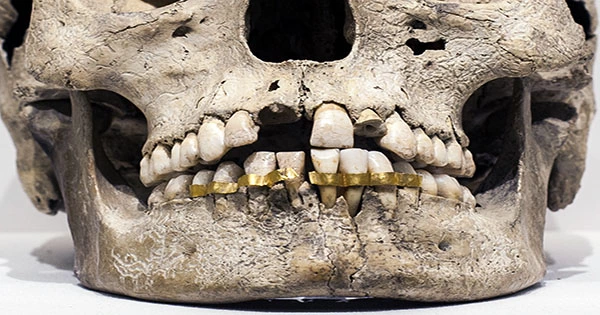Maya people possessed some of the most beautiful smiles in history, typically decorating their teeth with colorful and valuable gems and rare metals ranging from volcanic obsidian glass and brilliant green jade to gleaming gold. The potent sealant used to bond the valuable stones to the teeth may have also decreased the incidence of oral infections and enhanced dental health, according to a recent study published in Journal of Archaeological Science: Reports.
To understand more about the substance used to “glue” the inlays onto the tooth, scientists at Mexico’s National Polytechnic Institute’s Center for Research and Advanced Studies investigated eight teeth from the first millennium CE unearthed in modern-day Honduras, Guatemala, and Belize. This was clearly a powerful adhesive. The inlays are still solidly bonded to the teeth, which originate from the Classic Maya Period (about 250 CE to 900 CE). Aside from its strength, it appears that the sealant may have also contained chemical substances with antibacterial properties.
The scientists write, “Using chosen vegetal resins or essential oils in dental sealings might well offer the antibacterial, antifungal, and anti-inflammatory actions required to enable effective treatments and hence prolong the lifespan of the inlay in the mouths of its human carriers.” The sealant was made up of around 150 organic compounds present in plant resins. One of these molecules, for example, is sclareolide, a natural substance obtained from Salvia plants with antibacterial characteristics. Camphor, a waxy substance that may be used topically to treat insect bites and skin irritation, is another option. Because of its relaxing effects, camphor is still used in a range of skincare creams and bath products today.
It indicates that these showy dental embellishments were not just worn by the rich elite as a show of wealth or social superiority. “Two people were discovered in a formal tomb or crypt, but the lack of prestige offerings directly linked with these people implies they were not royalty. Another five people were from basic internments, indicating that they were people of low social status. An extra Holmul tooth had been included in an offering “The authors of the research write.” “While the blends were both complex and effective in providing long-lasting dental obturations, the mortuary contexts of the individuals sampled indicate that these were not elite individuals, but rather that the expertise of the individuals who manufactured these cements benefited a broad swath of Maya society.”
















